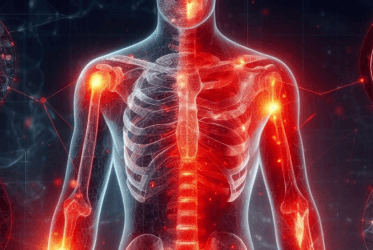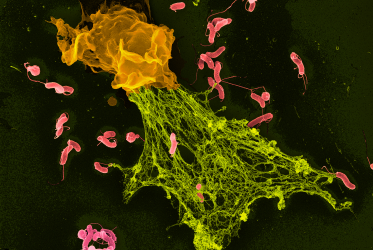Neutrophil Extracellular Traps (NETs) are DNA web-like structures coated with histones and antimicrobial and pro-inflammatory proteins, release from the neutrophil granules and cytoplasm. NETs, released by activated neutrophils, trap, neutralize and kill a variety of microorganisms.

NETs-RELATED DISEASES
Excessive formation or ineffective clearance of NETs can cause different pathological effects.
NETs formation has been observed in various autoimmune, inflammatory and fibrotic conditions, diverse forms of thrombosis, cancer and metastasis. NETs-mediated pathology and the medical conditions in which NETs cause pathology is continuously expanding.
PRX-119
PRX 119 is a PEGylated Deoxyribonuclease (DNase) I enzyme in development for NETs-related diseases, produced using our ProCellEx® platform
Designed to:
- Have increased half-life in the circulation
- Degrade circulating NETs related cell free (CF) DNA levels and therefore decrease NET-mediated pathology

Rationale
Neutrophil Extracellular Traps (NETs) consist of a DNA scaffold that can be enzymatically degraded by DNase. Therefore, DNase could have a potential regulatory effect on NETs formation. According to scientific literature, animal studies have demonstrated that DNase I treatment have reduced NETs toxicity in different NETs-related disease animal models
Furthermore, Protalix has demonstrated that the administration of PRX-119 resulted in a decrease in circulating cfDNA levels and significantly enhanced the survival of mice in both a CLP-induced sepsis model and an Acute Respiratory Distress Syndrome (ARDS) model.

